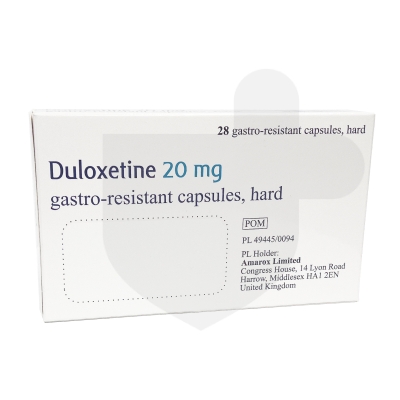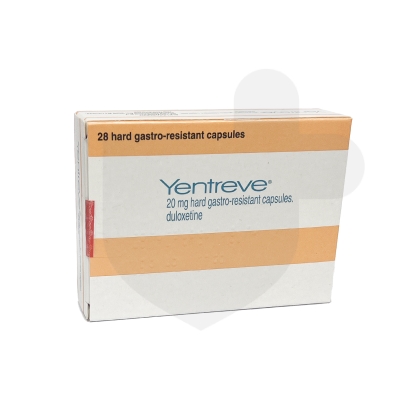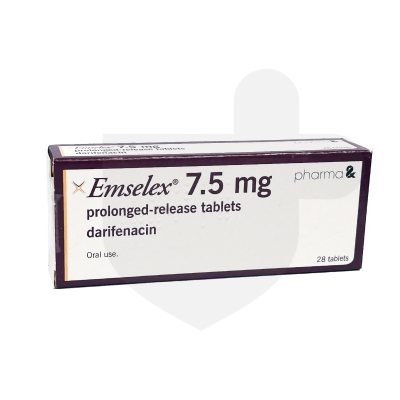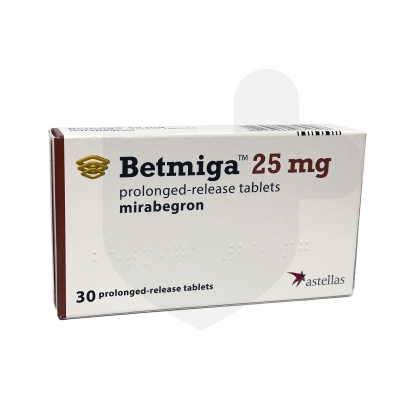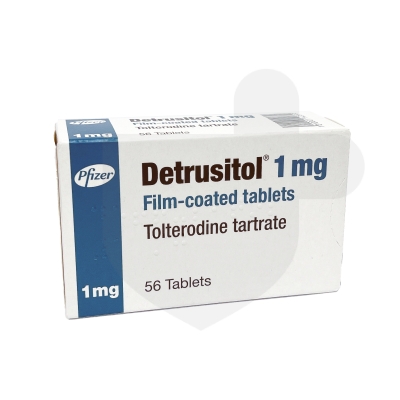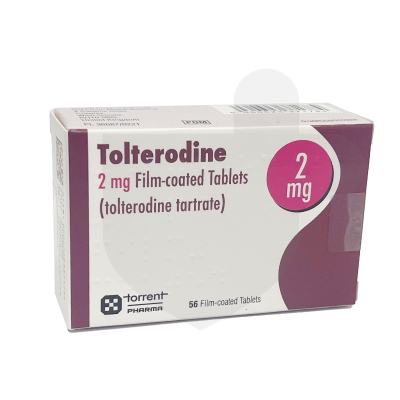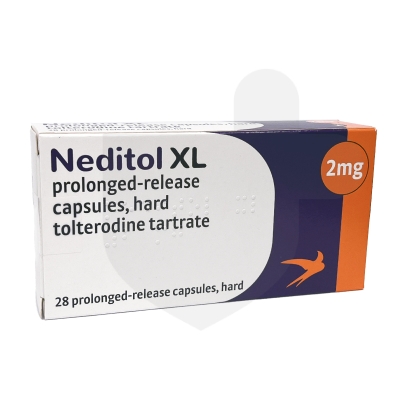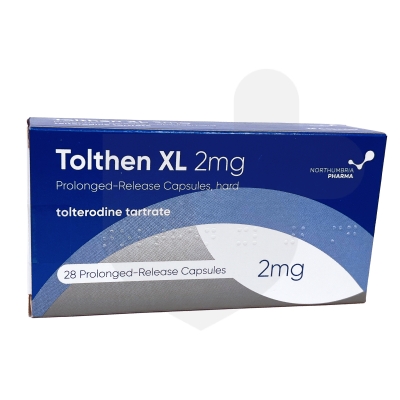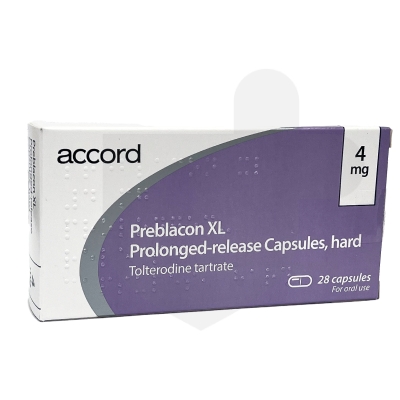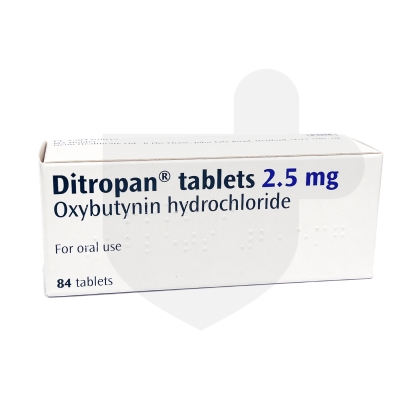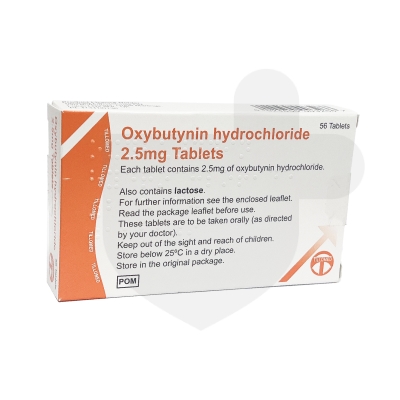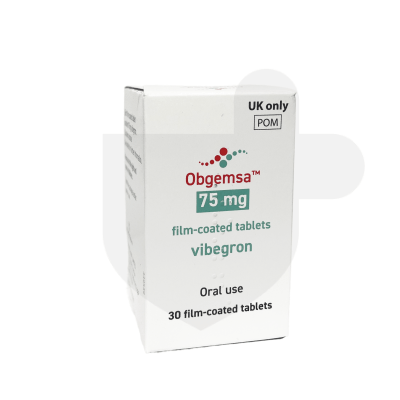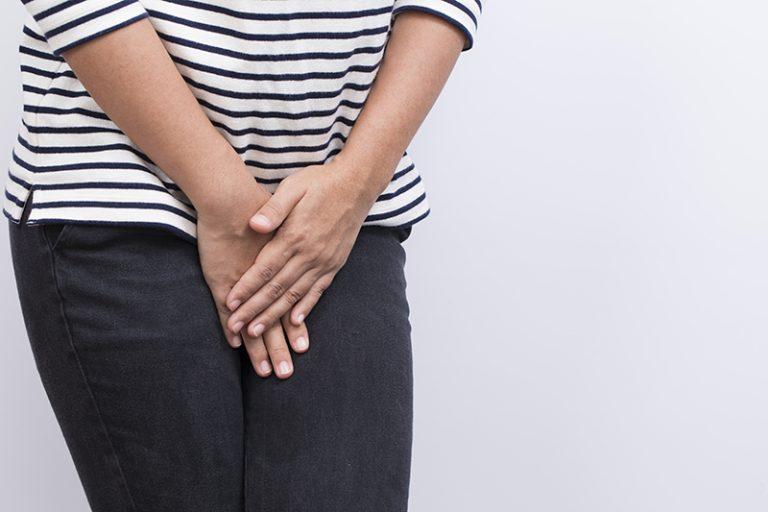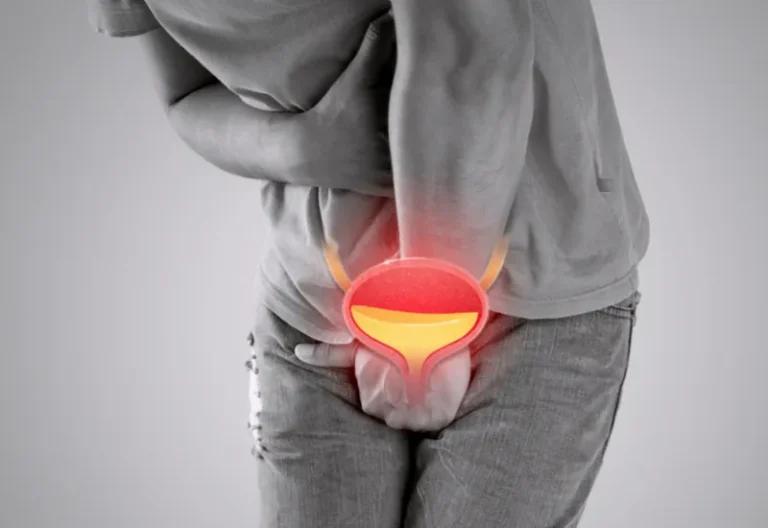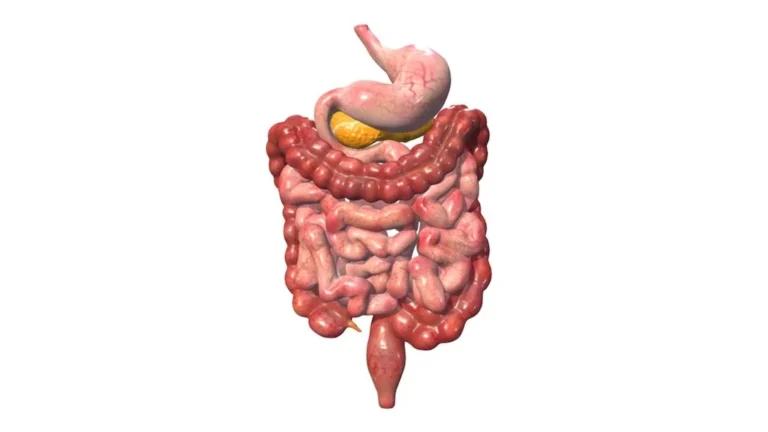Get Treated for Urinary Incontinence
GET TREATED CONVENIENTLY
Available Treatments for Urinary Incontinence
SAFE PRESCRIBING
Get Started With the Right Treatment for You
MEDICAL INFORMATION
Urinary Incontinence Key Facts
Urinary Incontinence is the unintentional passing of urine. It is more common in women and the elderly. Urinary Incontinence can be distressing and can impact on an individuals quality of life and mental well-being. There are various types, such as stress, urge, overflow, functional, mixed, reflex, and total incontinence, each with its own challenges.
Here, we will take a closer look at its causes, symptoms, diagnosis, management strategies and treatment options, as well as strategies for managing daily life, when living with Urinary Incontinence.
Understanding Urinary Incontinence
To manage the condition effectively, we need to understand the various types of Urinary Incontinence:
- Stress Incontinence (stress Urinary Incontinence):
- This occurs when physical activities such as coughing, sneezing, or exercise put pressure on the bladder, causing involuntary urine leakage
- Common in women, especially those who have experienced childbirth or menopause
- Management includes pelvic floor exercises and lifestyle modifications
- Urge Incontinence:
- Symptoms include a sudden, intense urge to urinate followed by urine leakage, with little warning
- Associated with conditions such as urinary tract infections or neurological disorders, which affect the bladder’s ability to hold urine
- Treatment may include bladder training, medication, or nerve stimulation techniques to help improve bladder control
- Overflow Incontinence:
- Caused by the bladder’s inability to empty completely, causing constant or frequent dribbling of urine
- Often caused by an obstruction in the bladder or urethra, or nerve damage, which can cause bladder problems
- Catheterization or surgery may be necessary
- Total Incontinence:
- Continuous urine leakage or frequent uncontrolled urination
- Caused by abnormalities in anatomy or damage to the urinary system
- Management includes surgical interventions or special containment devices
- Mixed incontinence:
- When you may have both urge and stress incontinence symptoms
By understanding which type of incontinence a person has, healthcare providers can tailor treatment strategies to improve bladder control and enhance quality of life.
Causes of Urinary Incontinence
The causes of Urinary Incontinence range from physiological to lifestyle:
- Age-related changes: Muscles supporting bladder control may weaken, and nerves that signal the need to urinate may not work as well as we age. This can cause the involuntary leakage of urine
- Pregnancy and childbirth place extra pressure on the bladder and pelvic floor muscles, potentially causing stress incontinence. Childbirth can lead to a dropped (prolapse) pelvic floor. With prolapse, the bladder, uterus, rectum or small intestine can get pushed down into the vagina
- A decline in estrogen during menopause can weaken the urinary tract muscles
- Excess weight and obesity increases pressure on the bladder, and may lead to stress incontinence
- Family history may play a role in predisposing individuals to Urinary Incontinence
- Underlying medical conditions, such as multiple sclerosis, diabetes, an enlarged prostate gland and urinary tract infections (UTIs) can impair bladder function
- Certain medications, such as diuretics, sedatives, and muscle relaxants, may increase the risk of Urinary Incontinence
- Alcohol, caffeine, and certain foods can irritate the bladder, making the symptoms of Urinary Incontinence worse
- Neural and structural damage to the bladder, sphincters, supporting structures, or pelvic floor can result in Urinary Incontinence
- Men who have had prostate surgery may develop stress incontinence
Addressing underlying causes is critical when receiving medical advice and treatment for Urinary Incontinence.
Symptoms and diagnosis
Diagnosis includes:
- Initial consultation to gather information about your symptoms and medical history
- Physical exam, including a stress test, where you are asked to perform activities that typically trigger urine leakage
- Diagnostic tests such as:
- Urinalysis, to check for signs of infection
- A record of your bladder activity
- Measurements of the amount of urine left in the bladder after urination
- Urodynamic testing, to test how well the bladder, sphincter muscles, and urethra are storing and releasing urine
- Cystoscopy
- Pelvic ultrasound, to check for abnormalities
These tests help to rule out other conditions that may cause Urinary Incontinence, such as urinary retention, which can lead to overflow incontinence.
Managing and treating Urinary Incontinence
Management of Urinary Incontinence involves non-invasive strategies to surgical interventions:
Lifestyle modifications and behavioural therapies:
- Maintaining a healthy weight to reduce pressure on the bladder
- Managing fluid intake and reducing bladder irritants like caffeine
- Performing pelvic floor exercises, such as Kegels, to strengthen the pelvic muscles
- Bladder training techniques to delay urination, increase bladder capacity and improve bladder control
- Using absorbent pads or catheters to manage leaks
Pharmacological treatments:
- Duloxetine, to boost muscle tone in the urethra
- Antimuscarinics, such as oxybutynin to control an overactive bladder
- Mirabegron, to relax bladder muscle, enhancing its ability to store urine
Be aware, the medications listed above cause side effects.
Surgical options:
- Colposuspension and sling procedures
- Urethral bulking agents
- Artificial urinary sphincter
- Botulinum toxin A injections
- Nerve stimulation therapies
Specialist services and support:
- NHS continence services
A combination of lifestyle changes, medical treatments and surgery, is often necessary, depending on the type and severity of the condition, with 80% of individuals affected by Urinary Incontinence seeing improvements with these treatments.
Living with Urinary Incontinence
Here are some practical tips for day-to-day management of Urinary Incontinence:
- Pelvic floor muscle training to strengthen the pelvic floor muscles and reduce urine leaks
- Lifestyle changes, including weight management, dietary changes, increasing fluid intake, stopping smoking and exercise modifications
- Being mindful of personal triggers
- Knowing the locations of bathrooms
- Discussing concerns with partners, family, or friends and seeking professional help if needed
- Caregivers are encouraged to seek support, including referrals to local continence services
These strategies can significantly reduce the impact of Urinary Incontinence on daily activities. For further information consult NHS Inform for comprehensive guidance.
Conclusion
Embracing strategies such as lifestyle changes, tailored therapies, and seeking professional support can lead to significant enhancements in quality of life.
Frequently asked questions about Urinary Incontinence
What can be done to treat Urinary Incontinence?
Self-help strategies and lifestyle modifications, include:
- Pelvic floor exercises
- Stopping smoking
- Exercising appropriately
- Avoiding heavy lifting
- Weight management
- Addressing constipation promptly
- Reducing caffeine and alcohol consumption
What are the different types of Urinary Incontinence?
There are 4 main types of Urinary Incontinence:
- Urgency incontinence
- Stress incontinence
- Functional incontinence
- Overflow incontinence
How can I improve my bladder control?
Performing pelvic floor muscle exercises (Kegel exercises) helps to strengthen muscles that support the bladder, helping to prevent urine leakage during activities.
Sources
Medical Disclaimer
NowPatient has taken all reasonable steps to ensure that all material is factually accurate, complete, and current. However, the knowledge and experience of a qualified healthcare professional should always be sought after instead of using the information on this page. Before taking any drug, you should always speak to your doctor or another qualified healthcare provider.
The information provided here about medications is subject to change and is not meant to include all uses, precautions, warnings, directions, drug interactions, allergic reactions, or negative effects. The absence of warnings or other information for a particular medication does not imply that the medication or medication combination is appropriate for all patients or for all possible purposes.
Related Articles
Service Guide
Everything You Need to Know About Getting Treated Privately for Urinary Incontinence
What does the Get Treated Privately service for Urinary Incontinence do?
The Get Treated Privately service is a private prescribing service which is designed for adults aged 18 years and over, who are experiencing health issues and who would like to receive a fast-track assessment and if applicable, a treatment plan from a qualified prescribing clinician. Treatments for Urinary Incontinence are dispensed and delivered to your home or workplace from our regulated online pharmacy.
Is this a safe Urinary Incontinence prescribing service?
Yes. Our formulary of medications prescribed for Urinary Incontinence are controlled, governed, and continuously risk-assessed by our Medical Director, Dr Ihtesham Sabri. Unlike other prescribing services which operate using faceless questionnaires, our Urinary Incontinence prescribing service is conducted through remote video consultations, also known as synchronous consultations. This builds patient safety and prescribing appropriateness into our service, ensuring our prescribing clinicians can be satisfied with who and what they are treating. There is no guarantee of supply of medications, and any prescriptions supplied are at the sole discretion of our clinician prescriber. There is no charge for the Urinary Incontinence consultation.
What is a prescribing clinician and is it safe for me to use them on the NowPatient platform?
Our prescribing clinicians are board-certified pharmacists, nurses, or doctors who can also prescribe any medicine for any medical condition, subject to accepted accreditation and good clinical practice. They are all registered with their respective regulatory bodies. For example, a pharmacist independent prescriber is registered with the General Pharmaceutical Council (GPhC). Each prescribing clinician undergoes an extensive background check including a disclosure and barring service check (DBS). In addition, they undergo a rigorous license verification process. When you book an appointment with our prescribing clinicians you will see their full name, license number, and any specialized credentials they have.
Is the service available worldwide?
Yes, you can get treated privately for Urinary Incontinence worldwide.
Do I need to pay for this service?
Yes. This is a private service. You do not need to pay for the consultation. You only pay for the cost of the Urinary Incontinence treatment that you are prescribed.
How do I book a consultation?
Once you have logged into your account, you will need to navigate to the Get Treated Privately service card which is located as a service item on the dashboard.
Using the action button on the service card, you can select one of the following – ‘Search Treatments’ or ‘Search Conditions’. From here you can search for Urinary Incontinence.
Depending on the search type and the product/condition that you would like to get treated, you will be taken to a consultation booking screen. Follow the simple steps to complete your booking. During the booking confirmation, you will be able to select a date and time that is convenient for you, along with the preferred language and gender of the prescribing clinician you wish to choose. You will then see a list of all available expert clinicians who are trained to assess the medication or condition chosen. Once you have confirmed your booking, you will see a summary of the appointment including preliminary information about the consultation. At this point, you will also be able to add a reminder to your calendar. Always ensure your account health profile is up to date before any consultation. This ensures that our clinicians have the most up-to-date information about your current health status and anything that may influence their prescribing decisions. You will receive a push notification, SMS notification and email reminding you of your consultation, 30 minutes before the virtual consultation is due to start.
Depending on certain medications which require our clinicians to have your up-to-date blood pressure readings, you may be required to submit a virtual blood pressure check, using your smartphone or device. We will provide you with full instructions, when this is required.
What happens during the remote video consultation?
During the consultation, the clinician will ask you a series of questions that will allow the clinician to assess your condition and potential treatment options for Urinary Incontinence. At the end of the consultation, the clinician will decide which treatment options are safe and suitable option for you.
If it is, the clinician will discuss the treatment option, so that you can jointly agree on the treatment plan. Once you have jointly agreed on a treatment plan, the clinician will issue a prescription treatment for your Urinary Incontinence which will be available in your Cart at the end of the consultation.
Also, with your consent, the clinician may wish to inform your doctor of the treatment that was prescribed. We recommend that you agree to this since your doctor is responsible for your overall care and they should have a record of this consultation and medication prescribed. In addition, our clinician may take the opportunity to advise you on your overall health including advice on healthy living or stop smoking.
What happens at the end of the Urinary Incontinence consultation?
At the end of the consultation, you will receive a notification which will summarise the outcome. It will also advise you if any referrals were made to your doctor, along with any other advice that was given to you by the clinician.
If a referral letter was issued to your doctor, you will be able to view a copy of this in the ‘Documents’ section of the dashboard.
If you were prescribed a treatment, it will now be available in your Cart.
When you go to your Cart, you will be able to select the treatment, checkout and make payment. Once the checkout is complete, your prescription order will be sent to our regulated online pharmacy for processing.
What if the prescriber does not prescribe a treatment for Urinary Incontinence?
We operate a safe prescribing service. This means that our prescribing clinicians always exercise their clinical judgment when prescribing . Unfortunately, we do not operate a self select service where you can choose a medication and simply buy. If the clinician that sees you does not prescribe anything, then you will not be charged.
Will I get status updates for my order?
Yes. When your Urinary Incontinence treatment is approved, and after you have checked out and paid for your order, we will keep you fully updated with the status of your order. Every time the status of your order changes, you will be notified immediately. These notifications will appear in the ‘Notification Feed’ section on the dashboard.
How will my Urinary Incontinence treatment be delivered?
All orders are shipped in discreet and unmarked packaging. This means it is suitable for delivery wherever you require (home, work, or a neighbour).
For thermo-sensitive orders (e.g. Insulin or weight loss injections) we use cold chain-validated packaging. Your parcel will normally receive an estimated delivery window from the courier on the day of delivery.
For your protection and safety, your first order can only be delivered to the address that is registered with NowPatient. Future orders can be delivered to any other address, for example, your workplace.
Do you ship cold-chain or temperature sensitive products?
Yes. We use a specialist courier service for all thermo-sensitive deliveries. This is to ensure that cold chain integrity is always maintained and thus the product quality, safety and efficacy.
Learn more about how we handle the delivery of temperature sensitive products.
Where do you deliver?
We currently deliver to all postcodes/zipcodes worldwide. Some postcodes in rural areas may have a slightly longer delivery time.
When will my order arrive?
We aim to ship all orders placed Monday – Friday before 3pm on the same day. Orders placed outside these times will be shipped the next working day. All deliveries are shipped by Royal Mail, which delivers Monday through Saturday in the UK. For deliveries outside of the UK, please check with your national postal service for accurate delivery days.
Our delivery options have the following delivery times:
- UK – Royal Mail Tracked 24 & Signed for Delivery – Next day delivery
- Europe – Royal Mail Tracked – Typical delivery of 3-5 working days
- Worldwide – Royal Mail – Typical delivery of 5-7 working days. If a tracked option is available for your country via Royal Mail, this service will be applied.
What should I do if my order has not arrived?
Delivery is normally made promptly after your dispatch notification is received. You can check the tracking details of your Urinary Incontinence order in the ‘Notification Feed’ section of the dashboard, at any point after dispatch.
Unfortunately, packages can sometimes get lost in the delivery system. If after 10 days you have not received your delivery, please contact us and we will do all we can to resolve the problem.
Can you prescribe GLP-1 weight loss injections?
Yes. However, with GLP-1 weight loss medications, the license requires that there are support resources put in place as part of the plan including coaching for a healthy lifestyle, exercise, and diet. Our clinicians will discuss this with you, if you are prescribed this type of treatment.
You can learn more on our Weight Loss Programs feature page.
What’s included with my order?
If you are ordering a treatment for Urinary Incontinence, your order will contain your medication only.
If you are ordering weight loss injections, your order will contain:
- Your prescription of pre-filled weight loss injection pens
- Needles
- Sharps bin for safe disposal of needles (if ordered as part of the bundle)
Can I reorder my medication, if I have already been prescribed a course?
Yes. However, as a responsible prescribing service, we do not issue more than one monthly cycle of medication at a time.
This means that, if you would like to reorder, you will need to rebook a consultation.
This is important, because it allows our clinicians to keep track on the progress of your treatment plan and ensure that the medication remains safe and effective for you.
What is the earliest I can reorder my medication or treatment?
14 days after you have received your first monthly supply of medication, we will send you a notification to advise you that you are eligible to reorder your medication. To ensure that we are able to safely prescribe the Urinary Incontinence medication for the next supply, you will need to rebook a consultation.
This ensures that our clinician can check in on your treatment plan and ensure it is working as intended and continues to be safe, suitable and appropriate for you.
How do I reorder my Urinary Incontinence treatment?
When you are eligible to reorder your next Urinary Incontinence prescription, we will send you a notification reminder. This notification reminder will request that you book a consultation with a NowPatient Clinician.
You should book a suitable time and date for the consultation.
At the end of the consultation, the clinician may advise you to either
- Stop the treatment
- Stay on the current dose
- Increase the dose
If our clinician deems it safe for you to continue the medication used to treat Urinary Incontinence, the prescription will be added to your cart, from where you can checkout.
Delivery will be made in line with our delivery timescales.
As a responsible prescribing service, we will always monitor your Urinary Incontinence treatment plan to ensure that it remains safe, effective and suitable for you.
How do I reorder weight loss medication?
Our weight loss programs are built to closely monitor treatment progress and safety. Please refer to the Weight Loss Programs Service Guide that explains how you can reorder or step edit your dose.




